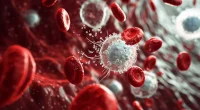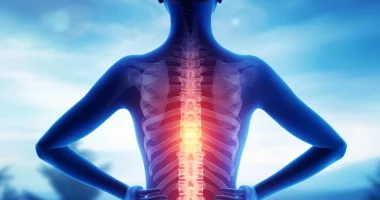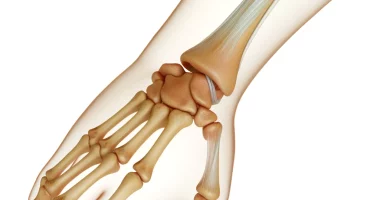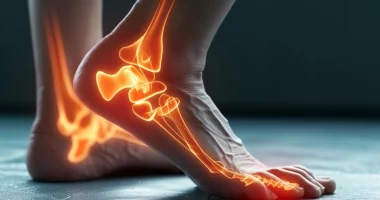Acute congestive heart failure
What’s that?
Acute heart failure is a clinical syndrome characterized by a sharp decrease in cardiac output and stasis in the small circle of blood circulation. The disease occurs in myocardial infarction and other cardiac emergencies, other somatic pathologies, and poisoning with cardiotoxic substances. It is clinically manifested by pulmonary edema and cardiogenic shock. ECG and echocardiography, chest X-ray, catheterization of heart chambers, and laboratory tests are used for diagnosis. Treatment of heart failure includes oxygen therapy and drug support; surgical methods are prescribed when indicated.
General information
Acute heart failure (AHF) is the leading cause of hospitalization and mortality in patients with cardiovascular pathologies worldwide. The disease is characterized by a severe course, rapid decompensation, and increasing multiorgan disorders, which require urgent, complex, multidisciplinary care from physicians. Left ventricular heart failure is a serious problem for the healthcare economy: its treatment costs account for about 2% of all medical expenditures.
Reasons
Acute left ventricular failure occurs as a decompensated variant of chronic heart failure, as well as in patients without previous heart disease. In older adults, the leading cause of AHF is ischemic heart disease, which causes up to 60-70% of all cases of critical circulatory disorders. Among the etiologic factors of the disease, the following also stand out:
- Non-inflammatory heart disease. In young and middle-aged patients, many cases of acute left ventricular failure are associated with dilated cardiomyopathy, rhythm disorders (ventricular fibrillation, ventricular tachycardia), and heart defects.
- Emergency conditions. The causes of acute circulatory disorders are cardiac tamponade, rupture of aortic aneurysm, and pulmonary embolism. Left ventricular failure is considered a typical manifestation of a complicated form of hypertensive crisis.
- Myocarditis. In severe inflammation of the myocardium, its contractility is significantly reduced, and cardiac output falls, which is a trigger factor for AHF. Myocarditis more often has an infectious-allergic character; occasionally, it is caused by toxic, autoimmune factors.
- Non-cardiac causes. Disturbances in the small circle are provoked by background diseases: cerebral blood flow disorders, bronchial asthma, and renal failure. AHF can occur with severe drug or alcohol intoxication.
- High ejection syndromes. Inadequate heart muscle work is observed in disseminated infections, septicemia, thyrotoxic crisis, and anemia. Occasionally, a blood bypass triggers the disease.
- Cardiotoxic substances. In poisoning with organophosphorus compounds (OPs) and insecticides, sudden cardiac dysfunction is observed. To the development of AHF can also lead an overdose of cardiac glycosides and alpha2-stimulants.
Pathogenesis
The inability of the left ventricular myocardium to provide average cardiac output plays a crucial role in the formation of the clinical syndrome. Such disorders are caused by irreversible muscle tissue necrosis and potentially reversible processes of functional stunning, myocardial hibernation. The condition is accompanied by normal or enhanced venous return.
Classification
According to the phase of cardiac dysfunction, left ventricular failure is systolic (cardiogenic shock) when there is low blood flow in the large circle and diastolic (pulmonary edema), for which stasis in the veins of the small circle is typical. To determine prognosis and treatment tactics, the classification of “clinical severity” is used, which includes four classes:
- Class I—” warm and dry” patients. Low cardiac output, the normal blood supply to peripheral tissues, and absence of stasis in the small circle.
- Class II—”warm and moist.” This is an AHF with blood deposition in the lungs’ venous reservoirs and no symptoms of peripheral hypoperfusion.
- Class III “cold and dry”. Disorders of arterial blood supply in the tissues without symptoms of pulmonary congestion.
- Class IV – “cold and wet.” The most severe variant of acute left ventricular failure, in which tissue hypoperfusion is combined with signs of pulmonary edema.
Symptoms of left ventricular failure
The clinical picture of this disease consists of separate syndromes and depends on the variant of AHF. Signs of congestion in the small circle are severe dyspnea and respiratory wheezes audible at a distance, which persist at rest. To alleviate the condition, patients sit down and rest on their arms (orthopnea), but suffocation is present even in this position. When coughing and breathing, frothy pinkish sputum comes out of the mouth.
Disorders of peripheral blood supply manifest as severe weakness, dizziness, and pre-syncope. The skin becomes pale with a grayish tint, and distal parts of the limbs and nasolabial triangle acquire a cyanotic color. The patient has a thready pulse, sharply decreased blood pressure, and decreased volume of urination.
Complications
Left ventricle failure has high mortality rates: hospital mortality in the 30 days is 8%, and up to 25% of patients die of severe consequences within six months. The highest mortality is observed in the development of pulmonary edema: 12% and 40%, respectively. In left ventricular infarction, about 30% of patients die within one year.
20% of patients with acute HF develop severe renal dysfunction with GFR less than 30 ml/min/1.73 m2, and 71% have mild to moderate urinary dysfunction. Artificial heart valve thrombosis is considered prognostically unfavorable and often ends with the patient’s death in the first hours after hospitalization.
Diagnosis
Patients are examined by intensive care unit physicians together with cardiologists. It is possible to determine the severity of acute left ventricular failure by assessing the clinical condition and physical manifestations. Further diagnosis is carried out in parallel with emergency measures aimed at stabilizing the patient’s condition. The following methods of research are used:
- Cardiac ultrasound. Echocardiography reveals a decrease in ejection fraction, disorders of the structure and function of the heart valve apparatus, and signs of effusion in the pericardial sac. Dopplerography assesses blood flow in the heart cavities and main vessels.
- Electrocardiogram. The ECG determines the heart rhythm and identifies some etiologic factors of AHF: myocardial infarction, fibrillation, and tachycardia.
- Coronary angiography. An invasive method of investigation with contrast is needed to detect blood clots, ischemia, and other coronary blood flow disorders. To clarify the diagnosis, CT angiography of the venous arteries and large vessels of the bronchopulmonary system is used.
- Chest X-ray. X-rays show the degree of dilation and deformation of the contours of the heart and the presence of congestion in the lungs.
- Laboratory tests. The standard diagnostic complex includes clinical blood and urine tests, blood biochemical analysis, and coagulogram. To confirm the cardiac etiology of acute left ventricular failure, natriuretic peptide, myocardial markers, and acute phase proteins are measured.
Differential diagnosis
Cardiogenic pulmonary edema must be distinguished from similar symptoms of noncardiogenic origin:
- for acute respiratory tract infections;
- aerosol poisoning;
- chest trauma;
- pneumothorax.
The clinical manifestations of AHF are differentiated with cardiopulmonary abnormalities in craniocerebral trauma, electrical trauma, and adult respiratory distress syndrome in sepsis.
Treatment of acute left ventricular failure
Conservative therapy
Intensive therapy aims to rapidly stabilize hemodynamics and eliminate symptoms. The best long-term prognosis is observed when treatment is started within the first 2 hours of the onset of AHF. Assistance is provided in intensive care, with subsequent patient transportation to a cardiac hospital when the condition improves. Extended cardiorespiratory monitoring is mandatory.
The critical task in acute left ventricular failure is to restore tissue oxygenation to stop the cascade of pathophysiologicalprocesses and multiorgan disorders. In moderate hypoxemia, oxygen therapy through a face mask is prescribed. On the indications, use non-invasive ventilation in the CPAP mode, artificial ventilation of the lungs. In parallel, medications of the following groups are prescribed:
- Opioid analgesics. The drugs control pain syndrome in myocardial infarction, promote vasodilation, suppress dyspnea, and stabilize the condition of patients with pulmonary edema.
- Vasodilators. For correction of peripheral hypoperfusion syndrome, nitrates are used, which give a rapid clinical effect.
- Diuretics. Medications are prescribed in the presence of fluid stasis in the small circle and in the absence of severe renal dysfunction. Loop diuretics, which have an additional vasodilating effect, are most often used to reduce resistance in pulmonary vessels.
- Inotropic drugs. Drugs are prescribed in all cases of deterioration of peripheral circulation.
Surgical treatment
Cardiac surgeons are required for patients who cannot achieve sustained clinical improvement by conservative methods. Surgical intervention is performed for emergency myocardial revascularization, reconstruction of the valve apparatus, and treatment of aortic aneurysm or aortic dissection. In severe forms of acute left ventricular failure, mechanical circulatory support (intra-aortic balloon counterpulsation (IABC), extracorporeal membrane oxygenation (ECMO)) is used.
All these treatment options are available in more than 520 hospitals worldwide (https://doctor.global/results/diseases/acute-congestive-heart-failure). For example, Intraaortic balloon pump (IABP) procedure can be performed in 24 clinics across Germany for an approximate price of $8.6K(https://doctor.global/results/europe/germany/all-cities/all-specializations/procedures/intraaortic-balloon-pump-iabp-procedure).
Prognosis and prevention
Acute left ventricular failure is characterized by a severe prognosis and, in the absence of emergency care, often results in the death of the patient. Successful implementation of intensive care measures should be accompanied by long-term inpatient and outpatient treatment by a cardiologist to eliminate the negative consequences of AHF and control the diseases that cause it.
Measures to prevent heart failure are limited to prevention and early diagnosis of cardiovascular diseases. Non-specific advice includes an active lifestyle, limiting fats and alcohol in the diet, and avoiding stressors.




